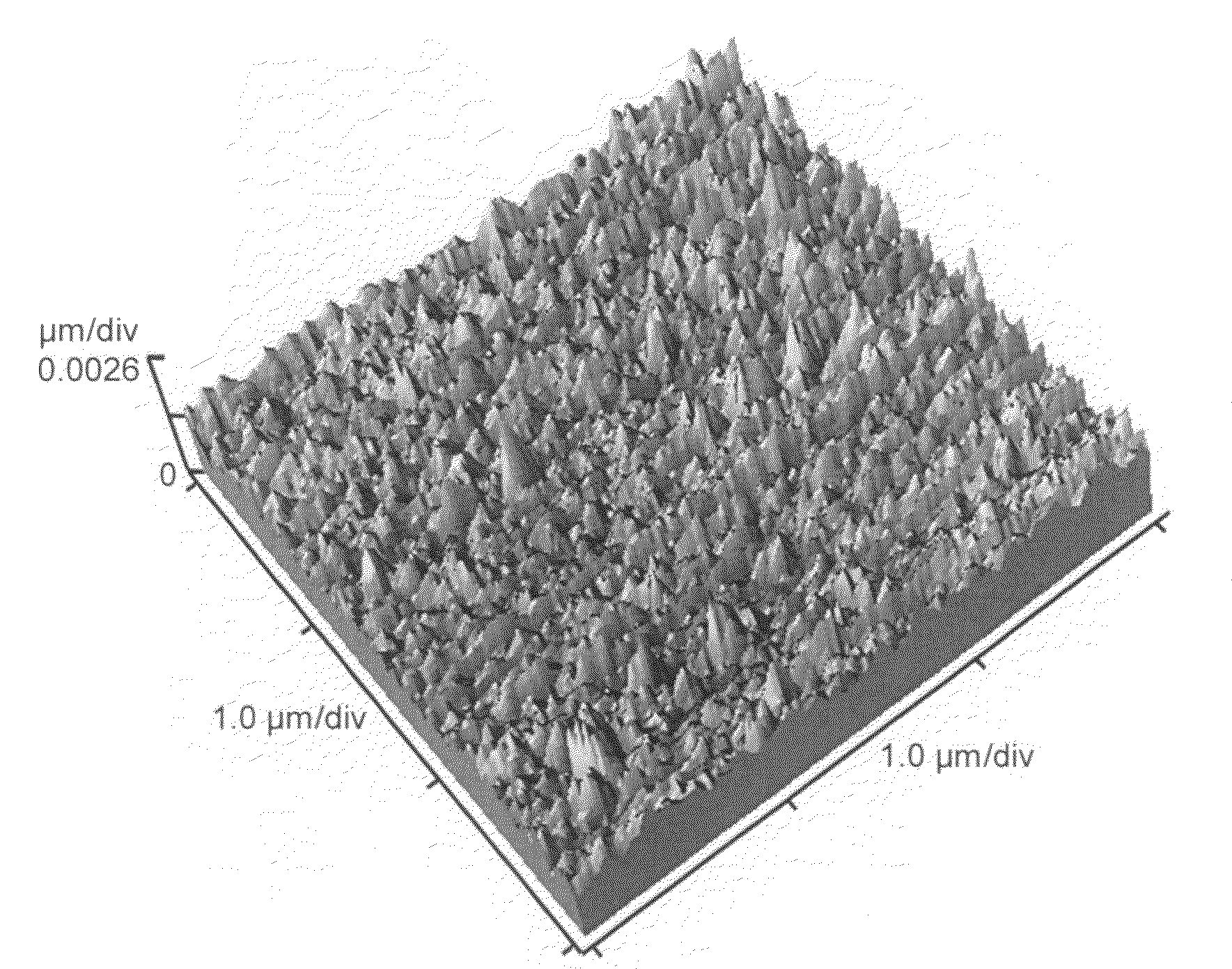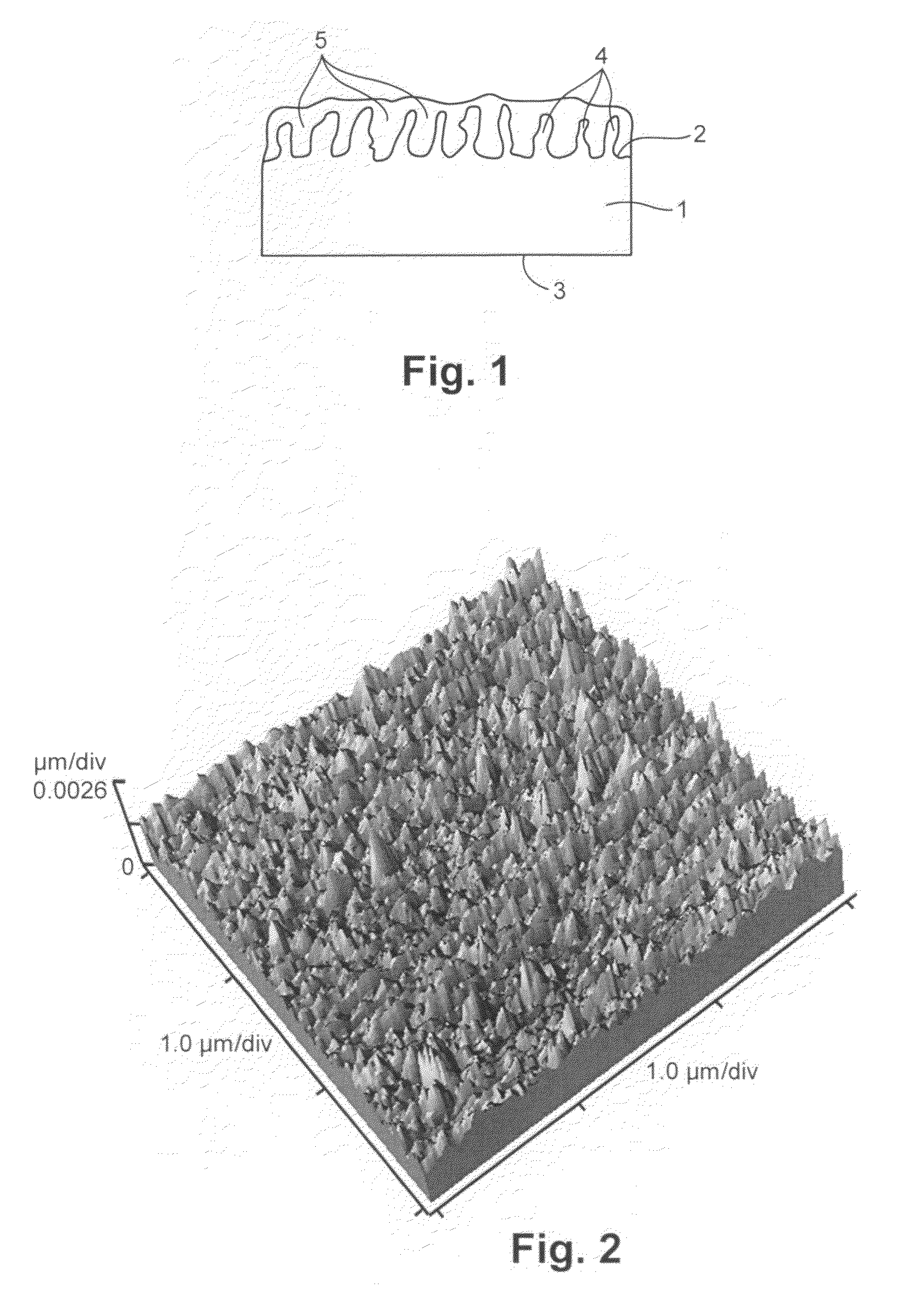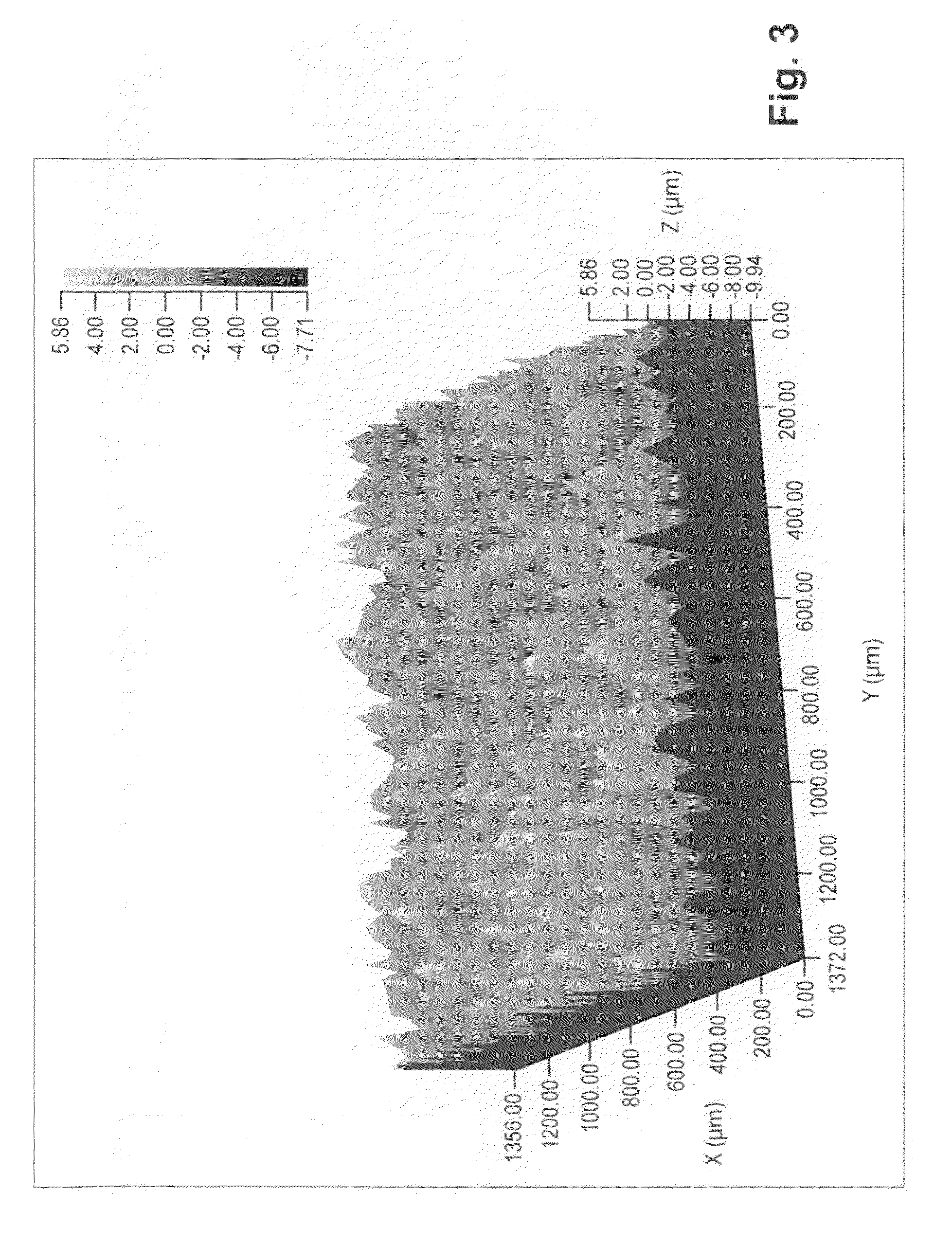Heat treatable magnesium fluoride inclusive coatings, coated articles including heat treatable magnesium fluoride inclusive coatings, and methods of making the same
a technology of heat treatment and coating, applied in the field of transmission enhancement optical coating, can solve the problems of headache, fatigue, headache, etc., and achieve the effect of reducing the visibility of information or images, and losing visual performan
- Summary
- Abstract
- Description
- Claims
- Application Information
AI Technical Summary
Benefits of technology
Problems solved by technology
Method used
Image
Examples
example 1
[0030]2.14 gm of magnesium acetate was dissolved in 15 mL of propanol-2. Then, 4 mL of trifluro acid (TFA) and 4 mL of deionized water was added. The solution was stirred for 2 hours. The experiment was performed on an un-textured substrate. The particular un-textured substrate was a commercially available float glass that was 3 mm thick having a roughness of 0.0026 um. This mixture is referred to herein as “Coating 1.” The magnesium fluoride film was fabricated using a spin coating method with process conditions of 2650 rpm for 30 seconds. These films were heat treated or thermally tempered in a furnace at 625 degrees C. for 3½ minutes. The optical spectra of uncoated-untextured glass and coated-untextured glass is shown in FIG. 4, and the increase in percent visible transmission is provided in the summary table above. More particularly, FIG. 4 is a graph plotting visible transmission vs. wavelength for an example metal fluoride coating applied to an un-textured glass substrate (A)...
example 2
[0031]Example 2 is similar to Example 1, except that the substrate is textured, e.g., is commercially available satin deco glass. Satin Deco glass has a roughness of 2.2 um on one side of the surface, as is shown in FIG. 3 above. In general, satin deco glass has peaks and valleys ranging from about −9.94 um to about 5.86 um, relative to the surface of the substrate. FIG. 5 is a graph plotting visible transmission vs. wavelength for an example magnesium fluoride coating applied to the smooth side of a textured glass substrate (A), compared to the example magnesium fluoride coating applied to the rough side of the textured glass substrate (B). The increase in percent visible transmission for Example 2 is 2.0.
example 3
[0032]A coating formulation, which is referred to herein as Coating 2, was made as shown in the following table:
IngredientExample (grams)Range (grams)n-Propanol31.9120-50n-butanol12.82 0-15Acetone19.42 0-25BYK0.150-1Intermediate51.0645-55Phenyl triethoxysilane0.610-3Methyl triethoxysilane0.550-3Tetraethoxysilane1.200-3Color Stock25.3820-30Acetic Acid0.490-2Water6.40 0-10
In this example, a glass substrate that has an un-textured surface (e.g., commercially available float glass) was used. The solution was spun on the substrate using a spin coater operating at 1500 rpm for 30 seconds. The coated glass was kept in the oven at 250 degrees C. for 5 minutes.
[0033]FIG. 6 is a graph plotting visible transmission vs. wavelength for an uncoated un-textured float glass substrate (A), compared to an example magnesium fluoride coating applied to an un-textured float glass substrate (B). The increase in percent visible transmission for Example 3 is 0.97.
PUM
| Property | Measurement | Unit |
|---|---|---|
| roughness | aaaaa | aaaaa |
| thick | aaaaa | aaaaa |
| roughness | aaaaa | aaaaa |
Abstract
Description
Claims
Application Information
 Login to View More
Login to View More - R&D
- Intellectual Property
- Life Sciences
- Materials
- Tech Scout
- Unparalleled Data Quality
- Higher Quality Content
- 60% Fewer Hallucinations
Browse by: Latest US Patents, China's latest patents, Technical Efficacy Thesaurus, Application Domain, Technology Topic, Popular Technical Reports.
© 2025 PatSnap. All rights reserved.Legal|Privacy policy|Modern Slavery Act Transparency Statement|Sitemap|About US| Contact US: help@patsnap.com



